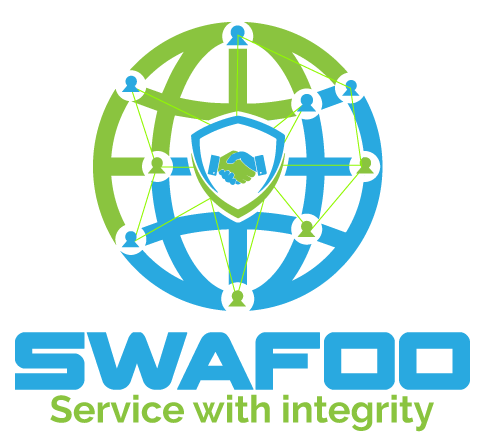The Google Search Algorithm Leak: Implications and How You Can Benefit

You’ve probably heard about the recent buzz surrounding the Google search algorithm leak and are curious about its potential implications. While some may advise caution, it’s evident that SEO is a data-centric field heavily reliant on search result metrics. Insights from the leak, even if incomplete, can significantly shape our approach to search marketing, debunking many myths. But with so much technical jargon in the leaked documents, how can an average solo marketer make use of this data? This article breaks down the Google Search Algorithm leak and demonstrates how DIY SEOs can use this knowledge to improve their search rankings.
Understanding the Google Search Algorithm Leak
In May 2024, over 2,500 pages of Google’s internal search algorithm documentation were inadvertently leaked, providing us with a glimpse into many of Google’s techniques. Discovered by search marketer Erfan Amizi and brought to the attention of Rand Fishkin and Mike King, the leak revealed extensive details about the Content Warehouse API, a possible core component of Google’s ranking system.
These documents expose over 14,000 ranking factors, giving us an unprecedented view of Google’s ranking processes. The leak has verified many previously speculated elements of Google’s algorithms and introduced new, previously unknown concepts to the public. This event is significant in the SEO world, and understanding these insights can help both seasoned professionals and DIY enthusiasts develop more effective SEO strategies.
Why SEOs Should Care About the Google Search Algorithm Leak
The leak provides insights into several key areas:
Confirmation of Best Practices
The leak validates many SEO practices that professionals have advocated for years, including producing high-quality content, building authoritative backlinks, and optimizing for user experience. This validation helps prioritize effective strategies known to align with Google’s ranking factors.
New Ranking Factors
Unknown factors like the “siteAuthority” score and the role of Chrome user data have been uncovered. Understanding these new ranking factors can help refine SEO strategies to align better with Google’s criteria.
Clear Roadmap for SEO
The comprehensive documentation offers a clear pathway for future SEO strategies, highlighting the significance of user engagement metrics, keeping content up-to-date, and producing expert-authored content. This guidance can assist SEOs in crafting more efficient, sustainable strategies.
Internal Terminology
The leak reveals specific internal terms used by Google, such as “Navboost” and “Golden Documents.” Familiarity with these terms can enable SEOs to ask more precise questions when communicating with Google representatives, leading to better understanding and clearer insights.
9 Most Important Takeaways from the Google Search Algorithm Leak
While the leaked document doesn’t reveal everything about Google’s ranking process, it provides valuable insights. Here are the key findings and how to use them:
1) Experimentation is Key
The important findings of the Google search algorithm leak are that Google isn’t fully transparent about what goes on under the search engine’s hood. Many blame the search engine giant for this. Remember, every business needs to keep its secret sauce a secret. Besides making financial sense, it also helps keep malicious actors from gaming the system. Some of the most prominent untruths Google uncovered in the leak include click data manipulation, spam link handling, and other insights.
Action to Take:
Run Controlled Experiments: SEO is not a guessing game. Success depends on the alignment of your strategies with Google’s ranking signals. Run experimental tests to see which strategies work.
Analyze Successful SEO Case Studies: Look at data from other brands succeeding at SEO to identify winning strategies.
Use Leaked Data for Experiments: Experiment with practical high-value ranking factors from the leaked data, assigning scores to see which brings the most returns.
2) Navboost is Crucial
Navboost, a feature that tracks and uses clicks as a ranking signal, is heavily emphasized in the leak. It shows that user interaction data, like click metrics, significantly influences rankings.
Action to Take:
Integrate Conversion Rate Optimization (CRO) into Your SEO: Include CRO in your SEO strategy to encourage organic clicks on SERPs.
Use Internal Links to Boost Engagement: Build strategic internal links to boost engagement metrics like clicks, dwell time, and page views.
3) Links Still Matter, But…
Links remain important, but the focus should be on building quality and relevant backlinks. The document indicates that outbound external links don’t hold much value.
Action to Take:
Create Cornerstone Content and Topic Clusters: Build relevant backlinks and enhance your entity SEO. Ensure the relevance of your anchor text.
4) High-Quality Content is Essential
Well, it’s not a secret, the value of high-quality content. It was also highlighted in the leaked document. Google emphasizes content freshness and E-E-A-T (expertise, authoritativeness, trustworthiness).
Action to Take:
Content Optimization: Ensure your content meets search intent, proper linking, and more. Use content optimization tools like SEOBoost and Clearscope.
Combat Content Decay: Update content regularly to maintain freshness. Ensure all dates associated with the content are accurate.
Implement E-E-A-T: Highlight the expertise of your content authors. Use writers with many citations across the web.
5) Site Architecture is Key
A clear and organized site architecture improves user experience and helps Google understand your site’s structure, boosting rankings.
Action to Take:
Develop a Clear Site Structure: Ensure your site has a logical and easy-to-navigate structure.
Optimize Internal Linking: Help Google understand the relationship between different pages on your site.
6) User Engagement Metrics are Vital
Metrics like bounce rate, dwell time, and pages per session are significant. High engagement indicates valuable content, leading to higher rankings.
Action to Take:
Improve User Experience: Ensure your site is easy to navigate, loads quickly, and is mobile-friendly.
Create Engaging Content: Produce content that is informative, engaging, and relevant to your audience.
7) Site Speed and Performance are Critical
Google values site speed and performance because they affect user experience. Slow-loading sites lead to higher bounce rates and lower rankings.
Action to Take:
Use tools to optimize Site Speed like Google PageSpeed Insights to identify areas for improvement.
Enhance Performance: Ensure your site is hosted on a reliable server and uses a content delivery network (CDN).
8) Mobile-Friendliness is a Must
With the increasing use of mobile devices, Google prioritizes mobile-friendly sites. A responsive design and a great mobile user experience are essential.
Action to Take:
Implement Responsive Design: Ensure your site adjusts to different screen sizes and provides a great user experience on all devices.
Test Mobile Usability: Use tools like Google’s Mobile-Friendly Test to check your site’s mobile usability.
9) Local SEO is Important
For businesses targeting local customers, local SEO is crucial. Factors like local citations, reviews, and proximity influence rankings.
Action to Take:
Optimize for Local Search: Ensure your business is listed on Google My Business and other local directories. You must use location-specific keywords in your content and meta tags.
Collect Positive Reviews: Encourage satisfied customers to leave positive reviews on Google and other review sites.
Conclusion
The Google search algorithm leak offers a rare look into the inner workings of Google’s ranking system. By leveraging the insights from the leak, SEOs can refine their strategies, improve rankings, and drive more traffic to their sites. SEO is an ongoing process, and staying updated with the latest developments is essential for long-term success.
Additional Insights and Strategies for DIY SEOs
The insights provided by the Google search algorithm leak can seem overwhelming, especially for solo marketers or small businesses with limited resources. However, there are practical steps you can take to make the most of this information and enhance your SEO efforts.
Leveraging Data-Driven SEO
One of the key takeaways from the leak is the importance of a data-driven approach to SEO. By systematically analyzing data and making informed decisions, you can optimize your website more effectively.
Action to Take:
Use SEO Tools: Utilize tools like Google Analytics, Google Search Console, Ahrefs, SEMrush, and Moz to gather data on your website’s performance. These tools can help you identify areas for improvement and track the impact of your SEO efforts.
Analyze Competitor Data: Look at what your competitors are doing well and identify opportunities to improve your own site. Use tools like SimilarWeb and SpyFu to gain insights into their strategies and traffic sources.
Content Strategy and Optimization
High-quality content remains a cornerstone of effective SEO. The leak highlights the need for content that is not only informative but also engaging and regularly updated.
Action to Take:
Create a Content Calendar: Plan your content in advance to ensure a steady stream of fresh, relevant material.
Focus on Long-Form Content: Longer, in-depth content tends to perform better in search rankings. Aim to create comprehensive guides, how-to articles, and detailed blog posts.
Implement Schema Markup: Use structured data to help search engines understand the content of your pages better.
Enhancing User Experience
User experience (UX) plays a significant role in SEO. A positive UX can lead to higher engagement, lower bounce rates, and better overall rankings.
Action to Take:
Improve Site Navigation: Make it easy for users to find what they’re looking for on your site.
Optimize for Speed and Performance: Regularly test your site’s speed and performance using tools like GTmetrix and Pingdom.
Enhance Mobile Usability: Ensure a seamless mobile experience by testing your site on various devices and screen sizes.
Building Authority and Trust
Authority and trust are critical factors in Google’s
ranking algorithm. Building a strong online presence and demonstrating your expertise can boost your rankings.
Action to Take:
Guest Blogging: Write guest posts for reputable websites in your industry to build backlinks and establish authority.
Engage on Social Media: Use social media platforms to share your content, engage with your audience, and build a community around your brand.
Encourage User Reviews: Positive reviews on Google, Yelp, and other review sites can enhance your credibility and improve local SEO.
Stay Tuned with SEO Trends
SEO is a constantly evolving field, and staying updated with the latest trends and developments is crucial for success.
Action to Take:
Follow SEO Blogs and Forums: Stay informed by following reputable SEO blogs, forums, and news sites. Some popular ones include Moz Blog, Search Engine Land, and Reddit’s SEO subreddit.
Attend Webinars and Conferences: Participate in SEO webinars, conferences, and workshops to learn from industry experts and network with other professionals.
Join SEO Communities: Engage with other SEOs in online communities, such as LinkedIn groups and Slack channels, to share insights and stay updated.
By incorporating these additional insights and strategies into your SEO efforts, you can effectively leverage the information from the Google search algorithm leak to improve your website’s rankings and drive more organic traffic. SEO is an ongoing process that requires continuous learning, experimentation, and adaptation to stay ahead of the competition and achieve long-term success.
Share This Post
Subscribe To Our Newsletter
Get updates and learn from the best
More To Explore

The Truth About SEO and Web Design: How Smart Design Can Improve Your Ranking
SEO and Web Design Every business wants to appear at the top of search engines. But few realize how closely web design and SEO work

Digital Marketing Strategies in 5 Steps: How to Create One That Delivers Results
Marketing Strategies Creating digital marketing strategies that actually work isn’t about chasing trends or using every platform at once. It’s about focus, knowing what your




